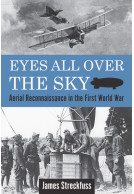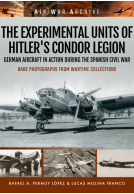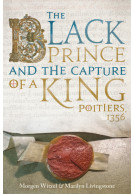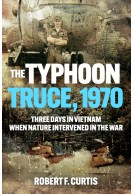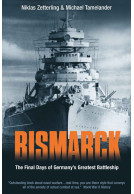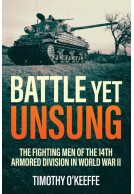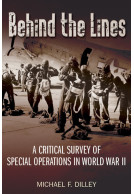Google Books previews are unavailable because you have chosen to turn off third party cookies for enhanced content. Visit our cookies page to review your cookie settings.
Eyes All Over the Sky (Hardback)
Aerial Reconnaissance in the First World War
By
James Streckfuss
Imprint: Casemate Publishers
Pages: 240
ISBN: 9781612003672
Published: 30th June 2016
Imprint: Casemate Publishers
Pages: 240
ISBN: 9781612003672
Published: 30th June 2016
You'll be £19.99 closer to your next £10.00 credit when you purchase Eyes All Over the Sky. What's this?
+£4.99 UK Delivery or free UK delivery if order is over £40
(click here for international delivery rates)
Need a currency converter? Check XE.com for live rates
(click here for international delivery rates)
Need a currency converter? Check XE.com for live rates
After the first successful flight by the Wright brothers in 1903, the age of aviation was born, and by 1910 army commanders in the United States and Europe began ordering aircraft and experimenting with them. But at the outbreak of World War I in 1914, no-one could yet possibly know how significant a role they would play in the fighting.
Aerial reconnaissance, observation and photography impacted the fighting in many ways, but little has been written about it. Balloons and airplanes regulated artillery fire, infantry liaison aircraft followed attacking troops and the retreats of defenders, aerial photographers aided operational planners and provided the data for perpetually updated maps, and naval airplanes, airships, and balloons acted as aerial sentinels in a complex anti-submarine warfare organization. Reconnaissance crews at the Battles of the Marne and Tannenberg averted disaster.
The story told here involves the early American Lafayette Escadrille pilots who were looking for heroic deeds and romantic adventure in aerial combat, as well as the German, British and French aces of popular imagination. But the real value of military aviation lay elsewhere; balloonists, unsung heroes, were an essential part of the observation chain, and forever altered the nature of artillery operations. Observation spotters from planes further enhanced the benefit of being able to extend the target range well out of the line of sight and direct artillery fire, though communicating information was far from easy and systems from weighted message bags through light flashes, smoke signals and wireless messages were tried and honed.
Eyes All Over the Sky fully explores all the aspects of aerial reconnaissance, and its previously under-appreciated significance. Also included are the individual experiences of British, American and German airmen; true pioneers of aviation warfare.
There are no reviews for this book. Register or Login now and you can be the first to post a review!
About James Streckfuss
James Streckfuss has been researching WWI aviation history for nearly fifty years. He is a founder of the League of World War I Aviation Historians and a long-standing editor of its leading journal Over the Front, as well as President of the League for eleven years. He has edited and contributed to several books on aviation history and the role of the United States in World War I and holds a PhD from the University of Cincinnati.
Customers who bought this title also bought...
Other titles in Casemate Publishers...







